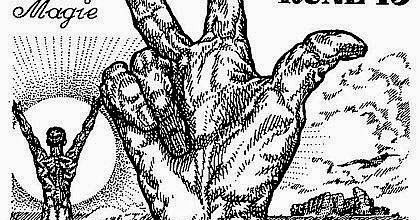Wolfgang vom Schemm
Wolfgang vom Schemm
Wolfgang vom Schemm nasce nel 1920, a Wuppertal-Elberfeld, in Germania.
Durante gli anni 1937-1939 studia presso la scuola di arti e mestieri in Wuppertal-Barmen. Qui si dedica completamente alla grafica e all’illustrazione, seguendo i corsi del Professor Hans Schreiber (1894-1980) e del professor Ernst Oberhoff (1906-1980).
Dopo la guerra diventa noto a livello internazionale attraverso le sue xilografie e opere grafiche astratte. Egli gode inoltre di buona popolarità come disegnatore per le sue illustrazioni per L’opera da tre soldi (Die Dreigroschenoper) di Brecht, e le edizioni tedesche di JF Cooper di The Tales Leatherstocking (Lederstrumpf) e Don Chisciotte di Cervantes. Produce anche una serie originale di illustrazioni e racconti comici noti come Onkel-Fritz-Geschichten.
Appartiene a diverse associazioni artistiche, come il Der Turm (la torre) con sede a Wuppertal, fondata insieme ad altri artisti famosi come Karl Otto Mühl (1923), Robert Wolfgang Schnell (1916-1986) e Tankred Dorst (1925), tra gli altri. Inoltre è membro permanente del Bergische Kunstgenossenschaft. Il sodalizio sentimentale permanente tra lui e la sua compagna di vita Gerda Weitz (1918-1999), lo ispira anche artisticamente. Nel 1950 condivideranno l’atelier nel Guttenbergstrasse a Wuppertal-Elberfeld, che sarà anche la base dell’associazione artistica Gruppe Z fondata nel 1960. Accanto a vom Schemm e alla sua compagna troviamo tra i suoi membri Margret Schriefers-Imhof (1928-2014 ), Werner Schriefers (1926-2003), Ilse Herget, Gerd Herget, Hella Schubert vom Schemm (sorella dell’artista), Oswald Lehmpfuhl (1914-2004) e Günther Gumpert (1919). La “Z” si riferisce agli interessi per il Buddismo Zen nei primi anni di vita del gruppo.
Nel 1980 anni viene coinvolto dall’autore esoterico cileno Miguel Serrano (1917-2009), a cui fornisce le illustrazioni per Nos, Libro della Resurrezione (1980), e Adolf Hitler, l’ultimo Avatar (1984).
Come riconoscimento della sua arte riceve diversi premi: il Premio artistico tedesco per la caricatura e l’illustrazione dei libri (Deutsche Kunstpreis für Karikatur und Buchmalerei) nel 1939, il Premio Eduard von der Heydt della città di Wuppertal nel 1959 e il Premio Villa Romana nel 1961.
Muore nel 2003.
Wolfgang vom Schemm is born in 1920, in Wuppertal-Elberfeld, Germany.
During the years 1937-1939 he studies at the school of arts and crafts in Wuppertal-Barmen. Here he fully dedicates himself to graphics and illustration, following courses under Professor Hans Schreiber (1894-1980) and Professor Ernst Oberhoff (1906-1980).
After the war he becomes internationally known through his woodcuts and abstract graphic works. He also enjoys popularity as an illustrator, and is, as such, known for his artwork for Brecht’s The Threepenny Opera (Die Dreigroschenoper), and the German editions of J.F. Cooper’s The Leatherstocking Tales (Lederstrumpf) and Cervantes’ Don Quixote. He also produces his own series of illustrations. Comical stories known as Onkel-Fritz-Geschichten.
He belongs to several art societies, such as the Wuppertal based Der Turm (The tower), founded together with other renown artistic personalities like Karl Otto Mühl (1923), Robert Wolfgang Schnell (1916-1986) and Tankred Dorst (1925), among others. Furthermore he is a lifelong member of the Bergische Kunstgenossenschaft. There’s a lifelong commitment between him and his life partner Gerda Weitz (1918-1999), who also inspires him artistically. In the 1950’s they will share ateliers in the Guttenbergstrasse in Wuppertal-Elberfeld, which will also be the homebase of the 1960 founded art group Gruppe Z. Next to Vom Schemm and his partner we find amongst its members Margret Schriefers-Imhof (1928-2014), Werner Schriefers (1926-2003), Ilse Herget, Gerd Herget, Hella Schubert vom Schemm (his sister), Oswald Lehmpfuhl (1914-2004) and Günther Gumpert (1919). The “Z” refers to the interest taken in Zen Buddhism in the early years of the groups’ existence.
Still in the 1980 years he becomes involved with the Chilean esoteric author Miguel Serrano (1917-2009), providing illustrations for Nos, Book of the Resurrection (1980), and Adolf Hitler, the Last Avatar (1984).
In recognition of his art he receives several awards : the German art prize for caricature and book illumination (Deutsche Kunstpreis für Karikatur und Buchmalerei) in 1939, the Eduard von der Heydt prize of the city of Wuppertal in 1959 and the Villa Romana Prize in 1961.
He dies in 2003.
Bibliography
Hackenberg, K. (1955). Wolfgang vom Schemm: Bilder von 1950 bis 1954. Wuppertal.
Schemm, W. vom (1960). Gruppe Z: 1. Ausstellung vom 27. Nov. bis 7. Dez. 1960, Wuppertal-Elberfeld. Wuppertal-Elberfeld: Atelier Wolfgang vom Schemm.
Schemm, W. vom (1968). Wolfgang vom Schemm: Monumentalmalerei, Transfiguration. Galerie Der Gral, Wuppertal-Elberfeld, 1. Kunstausstellung (vom 26. Okt. 1968 bis zum 26. Feb. 1969). 1. Journal. Atelier und Galerie Der Gral. Wuppertal-Elberfeld: Galerie Der Gral.
Schemm, W. vom (1969). Wolfgang von Schemm: Monumentalmalerei, Transfiguration. 2. Journal. Atelier und Galerie Der Gral. Wuppertal-Elberfeld: Galerie Der Gral.
Schemm, W. vom (1970). Galerie Der Gral zeigt Wolfgang vom Schemm, “Transfiguration”, “Onkel Fritz kommt”: Teil 1. Das rheinisch-westfälische Volksbuch : Wuppertaler Erinnerungen von 1920-1970 (12. Sept. 1970-1. Nov. 1970). Wuppertal-Elberfeld: Galerie Der Gral.
Schemm, W. vom (1970). Galerie Der Gral zeigt Wolfgang vom Schemm, “Transfiguration”, “Onkel Fritz kommt”: Teil 2. Handzeichnungen – 50 bedeutsame Persönlichkeiten der Stadt Wuppertal (6. Juni 1970 bis 31. Juli 1970). Wuppertal-Elberfeld: Galerie Der Gral.
Schemm, W. vom (1972). Gruppe Z. Bilder und Dialoge aus der Jahren 1950-1960. Ausstellung Galerie Der Gral 1972. Wuppertal-Elberfeld: Galerie Der Gral.
Stadtsparkasse Wuppertal (1973). Im Blickpunkt: Wolfgang vom Schemm, Zeichnungen und Holzschnitte. Wuppertal: Stadtsparkasse.
Schemm, W. vom (1973). Ars vivendi : 26 holzschnitte. Düsseldorf: Claassen.
Schemm, W. vom (1974). Wolfgang vom Schemm: Gemälde aus den Jahren 1961 und 1962 (Villa-Romana-Kunstpreis, Florenz). Wuppertal: Galerie Der Gral.
Aufenanger, Jörg (1980). Der Turm 1946-1948. Ein Rückblick auf eine Wuppertaler Künstlergruppe. Wuppertal: Kulturamt und Volkshochschule der Stadt Wuppertal.
Von-der-Heydt-Museum. (1997). Der künstlerische Impuls: Wuppertal im Aufbruch ; Bernuth, Brandau, Dirx, Hoffmann, Hüsgen, Oberhoff, vom Schemm, Schultze-Froitzheim. Wuppertal: Von der Heydt-Museum.













































